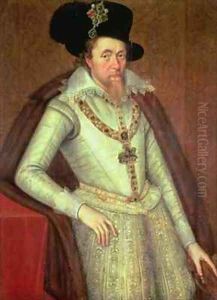John de, the Younger Critz Paintings
John de Critz the Younger was a notable 17th-century English painter, born in 1607. He was the son of John de Critz the Elder, who was a painter of Flemish origin and served as one of the Serjeant Painters to James I of England. This position meant that the elder de Critz was responsible for the decorative painting at the royal court, a role that his son would later take on as well.
Following in his father's footsteps, John de Critz the Younger developed his skills as a portraitist and a painter of courtly scenes. Although his work is less documented than that of his father, it is known that he inherited his father's position as Serjeant Painter, sharing the title with his brother Emanuel de Critz after their father's death in 1642. This period was a tumultuous time in England, marked by the Civil War and the eventual execution of King Charles I in 1649. Despite the chaotic backdrop, John de Critz the Younger managed to maintain a career by painting members of the aristocracy and possibly even some members of the royal family.
Not much is known about de Critz's personal life or his training. His works are sometimes confused with those of his father because of the similarities in their styles and the fact that they shared the same name. The younger de Critz's artistic style was typical of the Jacobean period, characterized by detailed and elaborate clothing, and careful attention to the depiction of texture and fabric.
John de Critz the Younger's career spanned a significant period of change in English history, and his works provide a visual account of the dress and people of his time. He died in 1653, leaving behind a body of work that, while not as extensive as that of some of his contemporaries, contributes to the understanding of portraiture and courtly representation in the 17th century.

